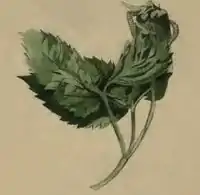Epermenia falciformis
Epermenia falciformis, also known as the large lance-wing, is a moth of the family Epermeniidae found in Europe. It was first described by Adrian Hardy Haworth in 1828.
| Epermenia falciformis | |
|---|---|
_Epermenia_falciformis_-_Flickr_-_Bennyboymothman.jpg.webp) | |
| Scientific classification | |
| Kingdom: | |
| Phylum: | |
| Class: | |
| Order: | |
| Family: | |
| Genus: | |
| Species: | E. falciformis |
| Binomial name | |
| Epermenia falciformis | |
| Synonyms | |
| |
Description
The wingspan is 9–11 mm. Adults are on wing from June to July and again from August to September in two generations per year.[2]
Ova are laid on angelica (Angelica sylvestris) and ground-elder (Aegopodium podagraria) in June and July, and in the Autumn.[3] Larvae of the first generation feed in May and June in spun leaflets of their host plant, while larvae of the second generation mine a stem immediately below an umbel, causing it to droop amd wither. When full grown, larvae leave via a small hole just before the junction above the main stem.[3] Pupation takes place in an open network cocoon amongst detritus on the ground.[4]
Distribution
It is found in Austria, Belgium, the Czech Republic, Denmark, France, Fennoscandia, Germany, Great Britain and Ireland, Latvia, the Netherlands and Slovakia.
References
- "Epermenia (Calotripis) falciformis (Haworth, 1828)". Fauna Europaea. Retrieved 4 October 2020.
- Kimber, Ian. "Epermenia falciformis (Haworth, 1828)". UKmoths. Retrieved 4 October 2020.
- Godfray, H C J; Sterling, P H (1996). Epermeniidae. In Moths and Butterflies of Great Britain and Ireland. Volume 3. Colchester: Harley Books. pp. 119–20. ISBN 0-946589-56-9.
- "Lepidoptera of Belgium". Archived from the original on 2014-04-07. Retrieved 2011-10-24.

